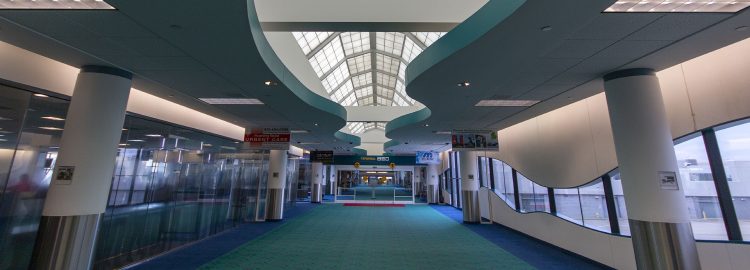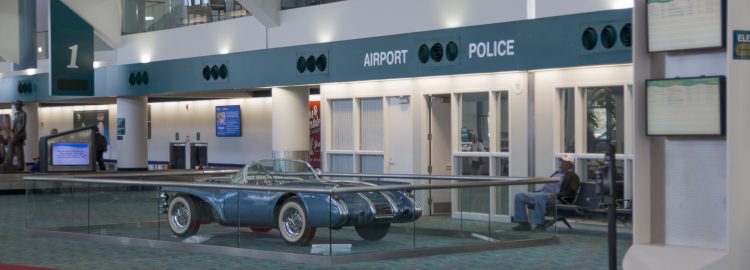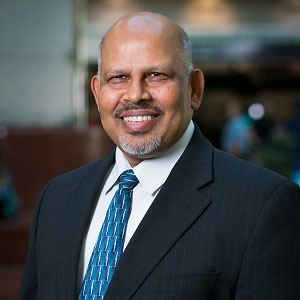Turning challenge into opportunity: How Flint Bishop Airport is punching above its weight
Posted: 28 May 2025 | Nino Sapone | No comments yet
At Routes Americas in The Bahamas, International Airport Review sat down with Nino Sapone, CEO of Flint Bishop International Airport, to discuss how his team is using community connections, federal grants and a spirit of adaptability to grow the airport’s profile, even amid industry-wide turbulence.


While major hub airports often dominate the spotlight, it’s regional airports like Flint Bishop International Airport (FNT) in southeast Michigan that are quietly redefining resilience and innovation. From pandemic-era pivots to international expansion goals, Sapone shares what it means to lead with purpose at a mid-sized airport, and why being small might just be Flint’s greatest strength.
“It takes partnership with the community and regional partners to really make the airport thrive.”
“It takes partnership with the community and regional partners to really make the airport thrive.” That is the philosophy that guides Nino Sapone as he leads Flint Bishop through a critical growth period. “Even though an airport like Flint has been there for a long time,” Sapone stated, “people really didn’t realise the service was there as we’re overshadowed by some bigger airports, like Detroit Metro. So, it’s like a hidden jewel.”
Terminal transformation: rooted in local identity
A key project in 2025 is the complete overhaul of Flint Bishop’s terminal, supported by a nearly $2 million FAA grant. “Most of that money is going toward the second phase of our airside terminal project,” Sapone explained. “It’s going to have all new ticketing counters and an all-new building.”
But this isn’t just about bricks and mortar. “For the first time, we’re going to put in terrazzo flooring in Flint, and it’s going to be focused on the Flint demographics,” he added. “Downtown Flint’s famous buildings will literally be embedded in the floor. We want it to be a sense of place for the community.”


Credit: FNT
Passenger experience and digital upgrades
The passenger experience is getting a tech boost, too. “We’re redoing all our flight information display systems,” said Sapone. “There’ll be large, new monitors and an interactive screen at the entrance — you can ask questions, and it’ll react with you. That’s going to make the customer experience a lot better.”
Outdated internal systems are also being overhauled to support more efficient operations — and more revenue. “There’s so much more opportunity for marketing, branding, advertising,” he noted. “We’ll be able to get revenue from brands marketing on our own equipment.”


Credit: FNT
Open to innovation, always
Sapone is keen to position Flint as a testing ground for new ideas. “Throughout my career, I’ve always partnered with innovation companies,” he said. “During the pandemic, we partnered with an Italian company, they brought in helmets with GPS and temperature reading. Our officers could look at you and read your temperature. Taking temperatures was the biggest thing back then.”
Now, the airport regularly works with consultants and tech firms to trial emerging systems. “We’re open for business as a test bed,” he emphasised.
Sustainability at the core
Sustainability is built into every major capital project at Flint. “We’re changing all our lights to LED,” said Sapone. “We just built a new fire station with a federal grant — over $10 million — and a lot of sustainability features were part of the design.”
Natural heating is also part of the strategy. “We added a lot of glass to bring heat into the terminal,” he said. “That really helps reduce the load on our HVAC systems.”


Credit: FNT
Big ambitions, international reach
One of Sapone’s top ambitions? Establishing an international service. However, smaller airports face hurdles in accessing Customs and Border Protection (CBP) resources.
“We want to build an international terminal and start international traffic,” he said. “But we can’t get the co-operation from CBP. They don’t have the resources, and they can’t allocate staff to our facility.”
Sapone hopes a new administration in Homeland Security will bring change. “We’re competing with CBP resources going to the borders. That takes away from airports like ours. We’re working with them and hoping we can make it work.”


Credit: FNT
2025 challenges and opportunities
Looking ahead, Sapone is realistic about the pressures facing commercial aviation. “Airlines have a lot of constraints, such as capacity, pilot shortages, staffing,” he said. “And the biggest thing is Boeing. One airline we deal with was supposed to get eight or nine Boeing aircraft by the end of 2024. They only got one.”
But there’s also reason for optimism. “There’s a mega site — a thousand acres, the biggest in the country — right next to the airport, slated for chip manufacturing. That’s going to bring a thousand jobs. Being the hometown airport for that business community is going to be big.”
Punching above its weight
“It takes partnerships to thrive. We might be small, but we’re open — and we’re ready.”
At Flint Bishop International, challenge is the mother of creativity. From community-integrated design to smart digital upgrades and innovation, the airport is proving that scale is no barrier to leadership.
Sapone sums it up best: “It takes partnerships to thrive. We might be small, but we’re open — and we’re ready.”


He is an Accredited Airport Executive and former President of the Northeast Chapter of the American Association of Airport Executives. Nino recently served on the AAAE Board of Directors, and serves on the Academic Relations, Operations, Safety and Emergency Planning, and Unmanned Aerial Systems committees.
Nino is results driven, qualified airport and business operations professional who productively leads diverse teams to new levels of success in a variety of complex situations and fast-paced environments. Nino has strong technical and business qualifications with an impressive record of more than 30 years of firsthand and progressive experience. He possesses the proven ability to analyse organisational changing business needs; implement systems engineering strategies; identify deficiencies and potential opportunities; and develop innovative and cost-effective solutions for enhancing competitiveness, all while increasing revenues and improving customer service.
Stay Connected with International Airport Review — Subscribe for Free!
Get exclusive access to the latest airport and aviation industry insights from International Airport Review — tailored to your interests.
✅ Expert-Led Webinars – Gain insights from global aviation leaders
✅ Weekly News & Reports – Airport innovation, thought leadership, and industry trends
✅ Exclusive Industry Insights – Discover cutting-edge technologies shaping the future of air travel
✅ International Airport Summit – Join our flagship event to network with industry leaders and explore the latest advancements
Choose the updates that matter most to you.
Sign up now to stay informed, inspired, and connected — all for free!
Thank you for being part of our aviation community. Let’s keep shaping the future of airports together!
Related topics
Airport development, Communication Technology, Digital transformation, Funding and finance, Innovation, Passenger experience and seamless travel, Social responsibility, Sustainability, Terminal operations


















